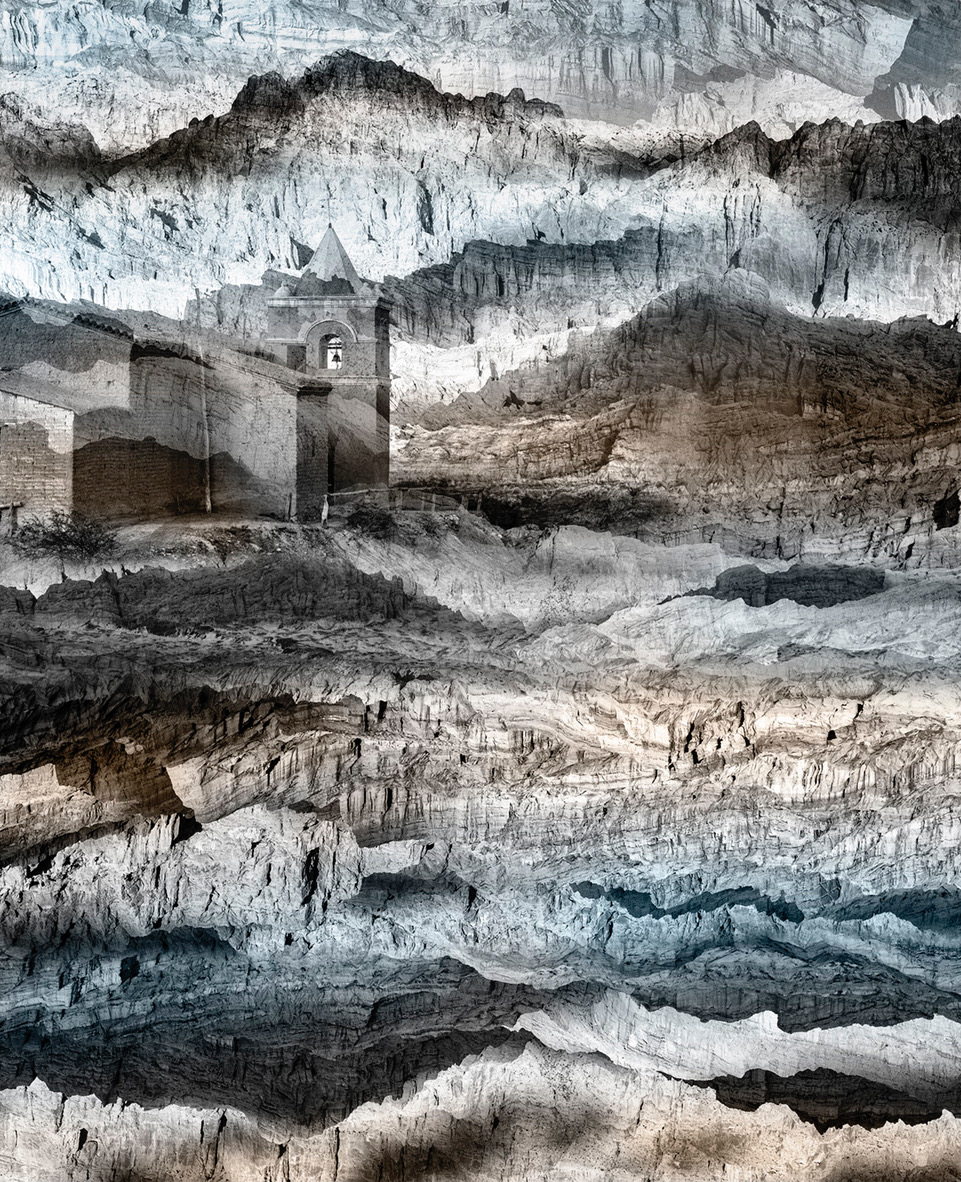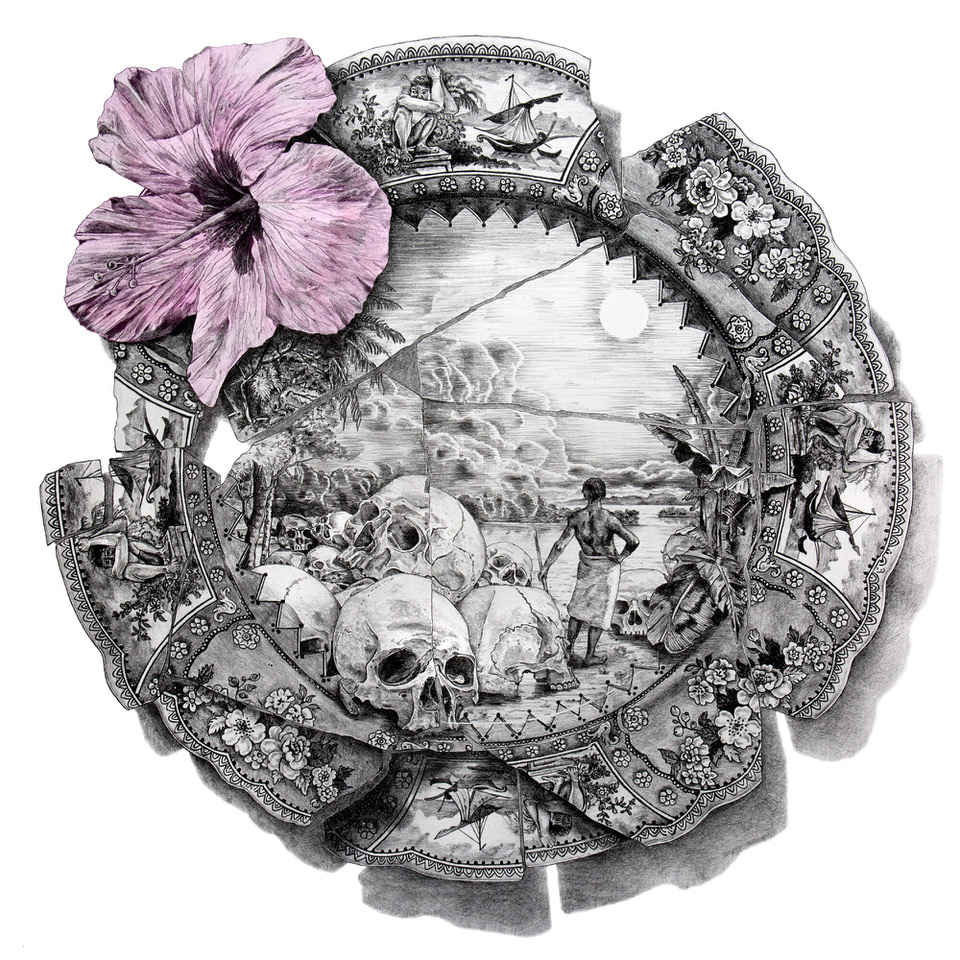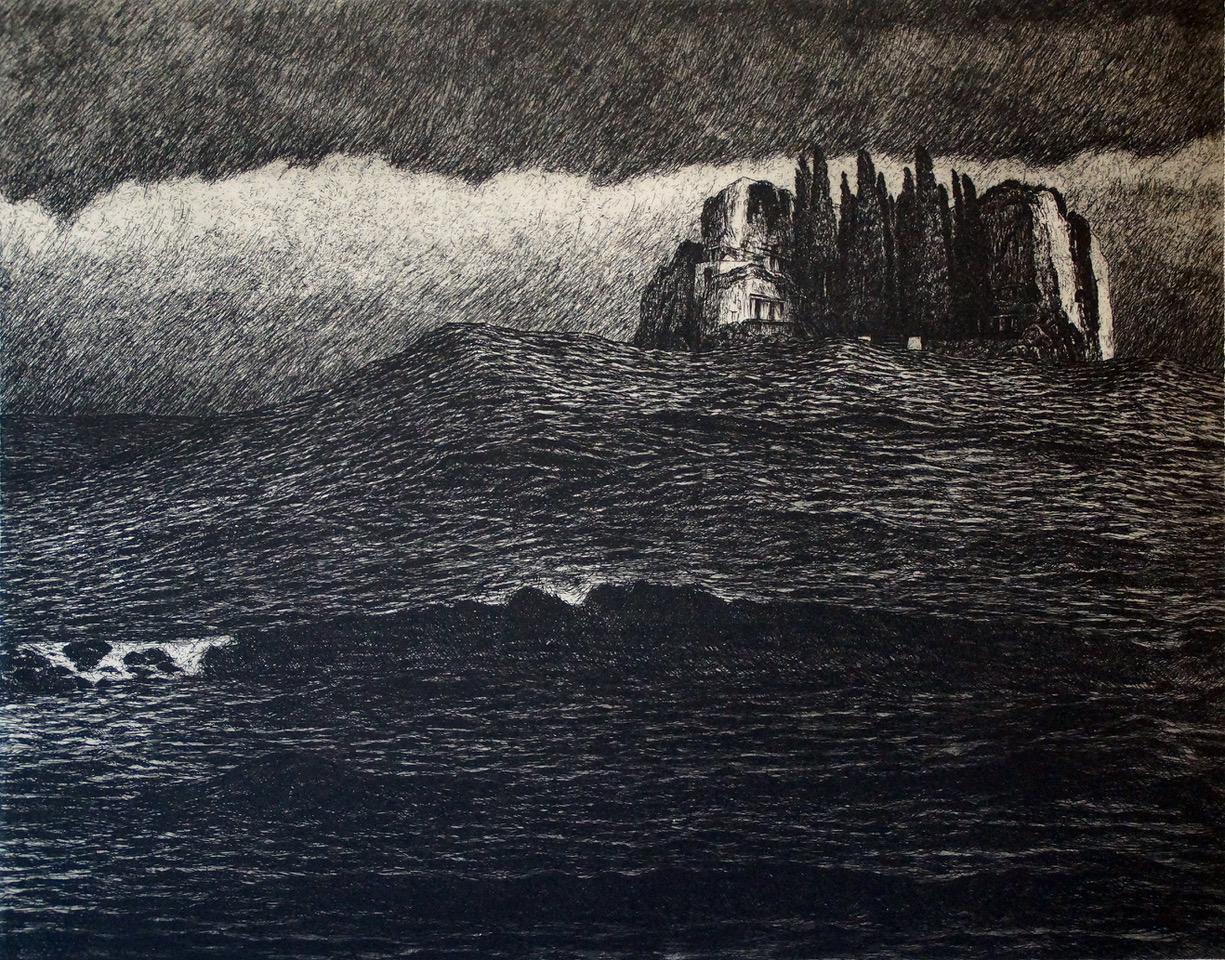

From top:
Robert Hague, Sigatoka (after Mueck), 2019, lithograph, hand coloured, edition of 25, 70 x 70 cm
Bronwyn Rees, Sticks & Stones, 2019, collage, 60 x 51 cm
Jasmin Isobe, Hakone 1, 2018, monotype, 14 x 14 cm
Joel Wolter, The wave of change II (black), etching, edition of 20, 53 x 56 cm
Silvi Glattauer, Re-negotiating Angastaco, 2019, photogravure, edition of 3, 58 x 42 cm
Tacit Galleries’ annual print exhibition Editions is the biggest of its kind in Australia, and is this year run in the twentieth year of Tacit’s opening. James Noonan speaks with curator Tim Bateson about Editions 2020 and the gallery’s history.
Collingwood’s Tacit Galleries is again presenting its enormous annual print exhibition Editions for its eighth consecutive year, a curated celebration of printmaking this year made up of 50 artists exhibiting over 200 total prints. Since its inaugural run in 2013 the show has challenged print artists state-wide to conduct their narratives and threads with between three to five prints each – mini-exhibits that allow printmakers to extend their conversations beyond singular work. Alongside the collection will be a space filled with the work of photopolymer trailblazer Lana de Jager, this year’s feature artist.
Editions embodies a tradition of materiality and process, with intaglio, relief, lithography and screen printing all present in forever-shifting mediums and methodologies. Established printmakers the likes of Robert Hague, Bronwyn Rees, Joel Wolter, Damon Kowarsky and Lisa Sewards will return alongside many Editions newcomers.
2020 marks twenty years since Tacit opened its doors, first a small single gallery in Thornbury and growing through several locations and configurations. Now in its third year at Gipps St, Collingwood, in 2021 the space will be once again moved to Johnston St where it will enjoy brand new galleries spanning two floors. Tacit’s generous and economical business practice sets it apart from other galleries of its kind, not only standing the test of time but steadily growing and enabling more artists to exhibit with each year that passes.
Tacit co-founder and curator TJ Bateson spoke about Tacit’s inception, its ideals, and what it represents for artists in printmaking today:
Where did Tacit Galleries get its start and how has its shape shifted over the years?
TJ: When we started in the early 2000s I was running the Melbourne School of Art in Elsternwick and opened the single gallery in Thornbury with my then wife Kerrilee (Ninnis). We did solo exhibitions and group shows for students, lecturers and tutors in the space, previously having hired out spaces to do so. At the time I’d just finished doing my honours in education and was looking at the notion of ‘tacit knowledge’, an unspoken language describing when you respond to something visually but you can’t necessarily put into words the attraction or connection that draws you to or repels you from it; we thought it was a great name.
The exhibition that really launched the space was Embedded, which was a two-person show between myself and Kerrilee. At the time we’d been separated and the work looked at a sense of self in a changing relationship. For me that was about coming out as a gay male in a married context. Her’s looked at the loss that’s carried when a relationship breaks down for orientational reasons and how we navigated that together. It was quite a dynamic time, and it was a really heartfelt exhibition that launched the very first Tacit.
We very quickly took on another building in Thornbury, a much larger space with about 6 gallery spaces, and started doing educational classes there. Over the next four years we closed the Melbourne School of Art, and in the mid 2000s I moved across to Carlisle St in Balaclava where I set up my studio with a gallery attached. From there it moved to Johnston St, Abbotsford into a little pop-up space, and that’s when everything changed.
By the time of the Balaclava move, Keith (Lawrence) and I were in a relationship. And then, in 2012, we found an old chocolate factory in Collingwood across the road from the little Tacit and decided to do it for good, so we built a big space together, and that’s when Keith took over the whole running of Tacit. I was teaching in secondary schools as a full-time teacher. Having started small with the pop-up in Johnston St, that’s when it had its first real chance to grow into something more substantial. It became something no longer secondary to teaching, it was its own entity, which gave it a very new position, and it was the start of Editions as well which was the first exhibition there.
We were there for 5 years until the building went up for redevelopment. It’s now demolished and is being rebuilt with a target completion date at the end of next year. We’re looking to extend beyond ‘simply’ exhibiting: included in the plans is a one-bedroom artist apartment for residencies, both interstate and international. By the time we get to the end of next year we will have done 7 Tacits over the 20 years, in which time we will have hosted over 1700 artists and 500 exhibitions.
What makes Tacit’s business model unique and how has it been sustained?
TJ: It started as cheap rentals, sheds, whatever we could do to make it work without having massive fees, keeping very low artist commissions. To sustain it we’ve needed good premises that are really cheap and a ton of hard work and hustle.
Tacit is an alternative to what’s out there. It’s curated and done by interview. We look at all the artists’ work, curate the final selection, do all installation, and Keith runs all the administration, sales and promotion. The artist pays an exhibit fee that’s around the $2000 mark, and Tacit takes a 20%-30% commission, which varies based on the commerciality of the exhibition. If we want to support an artist that might have something quite ephemeral or installation-based that doesn’t have a commercial reality, then we alter our fee because the artist can’t sustain it without at least making some money back.
That model doesn’t exist anywhere else, there’s no other gallery like us that will support the whole process like that. It’s our responsibility to monetise innovation and creativity, but we have to do a lot of work accomplish that. Someone once said to me that our business model is really bad, and that’s exactly why it’s fabulous. We have to believe that’s true and keep finding ways to stay sustainable. We do our own advertising, share costs, are economical in out print production, have xerox contracts and print everything ourselves, making all our own catalogues and material. Everything’s done as cheaply as we can on a shared platform to bring costs right down for every artist.
How will the gallery’s twentieth anniversary be celebrated in 2020?
One really cool thing is the original Embedded exhibit from 20 years ago is being remounted, with new work done over the last year looking at the same concerns Kerrilee and I had then, and how our sense of self, place and pathway has become quite different. We think the show’s going to be a knockout.
Then to pay respect to the artists we made 220 stretch canvases and have invited 150 artists who’ve exhibited over the last 20 years to make work, which will fill the rest of the venue. It’s just ace. We don’t know how we got to this place, but we know we fought a lot to get here and that we’ve carried a lot of good will with us. We sent out 150 invitations on a Thursday night and we had 100 responses by the following morning, we couldn’t believe it. We’d met capacity within days. It’s just such a beautiful and genuine legacy, we just have to keep fighting to keep it financially viable, just keep reinventing and keep going.
What’s most important to you at Tacit?
TJ: I think it’s artists having a sense of belief and faith. I think one of the things that blocks a lot of innovation and making is a fear of an idea being judged or invalid. I’d say this to any artist: if you are compelled to do or say something in a particular way for whatever reason, then you should do it, and you should let that truth empower you to make that work, and just push away anything that gets in front of it. Most of the time it’s the artists themselves.
My most hated word is fear, I think it’s one of the nastiest and most dangerous words in the language; it blocks so much happening. I think truth is one of the most powerful. We work towards truth and agency with artists to make a link between what they want to do and say and what the work does, that’s what we curate to, a sense of truth and connectivity.
It’s so personal that Tacit will never not be about Keith and I. It’s our world and it’s coloured by our eyes and ideology and that’s what it needs to be. It’s open, flexible, fluid, and we’ll just keep doing new things. Last year we did our first affordable art fair, this year we’re doing another but it’s triple the size and we’re running a print workshop that’s partnered with the Affordable Art Fair itself. I’d like to believe that our goal of supporting artists to make work will just be stronger in another 10 years. It’s about sustainable practice and not being ruled by consumerism, fads or trends but be controlled by truth. That’s what we care about.
–
Editions 2020 is at Tacit Galleries, 123a Gipps St, Collingwood, from 12-23 February.
tacitart.com.au







